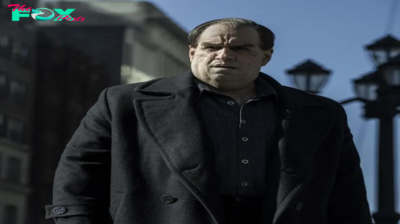Entertainment
Sir Simon Rattle’s new partnership with the BRSO yields spectacular outcomes at Carnegie Corridor – Seen and Heard Worldwide
 United States [1] Hindemith, Zemlinsky, Mahler: Lester Lynch (baritone), Bavarian Radio Symphony Orchestra / Sir Simon Rattle (conductor). Carnegie Corridor, New York, 2.5.2024. (ES-S)
United States [1] Hindemith, Zemlinsky, Mahler: Lester Lynch (baritone), Bavarian Radio Symphony Orchestra / Sir Simon Rattle (conductor). Carnegie Corridor, New York, 2.5.2024. (ES-S)

Hindemith – Ragtime (Properly-Tempered)
Zemlinsky – Symphonische Gesänge, Op.20
Mahler – Symphony No.6 in A minor
[2] Wagner, Adès, Beethoven: Bavarian Radio Symphony Orchestra / Sir Simon Rattle (conductor), Carnegie Corridor, New York, 3.5.2024.
Wagner – Prelude and Liebestod from Tristan und Isolde
Adès – Aquifer
Beethoven – Symphony No.6 in F main, Op.68, ‘Pastoral’
Since his Carnegie Corridor debut at 21, made whereas helming the London Colleges Symphony Orchestra, Sir Simon Rattle has been a gentle presence in New York as principal conductor of the Berlin Philharmonic. After a briefer stint than many anticipated as music director of the London Symphony Orchestra, he has now returned to Germany as chief conductor of the Bavarian Radio Symphony Orchestra (BRSO). The 2 Carnegie Corridor performances in early Might are a part of their first US tour collectively.
Since we’re in full swing at Carnegie Corridor in a pageant entitled ‘Fall of the Weimar Republic: Dancing on the Precipice’, it was greater than acceptable for Rattle and his ensemble to begin with two consultant works, even when little identified, composed within the Nineteen Twenties.
Paul Hindemith’s Ragtime (Properly-tempered) embodies the witty, eclectic and irreverent spirit of the period, which was additionally expressed within the works of Francis Picabia and the Dadaists. On this transient piece, Hindemith ingeniously parodied the theme of Johann Sebastian Bach’s C-minor fugue in Ebook I of The Properly-Tempered Clavier, reworking it right into a full of life rag enriched with dissonant harmonies. The efficiency was an pleasurable second for each the interpreters and the viewers.
Composed by Alexander Zemlinsky in 1929, Symphonische Gesänge is a cycle of seven songs set to German translations of poems by African American writers – Langston Hughes, Countee Cullen, Frank Smith Horne – related to the Harlem Renaissance. It’s the first time that the cycle has been carried out in its entirety at Carnegie Corridor. Diverging from Zemlinsky’s earlier compositions that are steeped in Mahler’s late Romanticism or Schoenberg’s modernism, the music of Symphonische Gesänge demonstrates a notable sense of restraint. From melancholy winds to clattering percussion, its evocative energy of suggestion was really exceptional.
Baritone Lester Lynch, the night’s soloist, delivered a efficiency of emotional resonance with a coMMAnding stage presence, infusing the songs with nice gravitas. His rendition illuminated the cycle’s wealthy tapestry of drama, irony, defiance and hope, and his insightful notes in Playbill added an additional layer of appreciation for the viewers.
Co-commissioned by Carnegie Corridor and receiving its US premiere on this event, Thomas Adès’s Aquifer stood out as the one piece in both BRSO efficiency that was conceived outdoors German-speaking lands. On this work in seven sections, meant to rejoice Sir Simon Rattle’s inaugural season on the helm of the BRSO, the fecund and prolix Adès proved once more his reward for excellent orchestral colours. The rePetitive, obsessive music may alternately sound like a large number of particular person voices in prayer looking for a communal expression, or just like the heavy, disturbing, menacing respiration of Fafner in his cave. Rattle dealt with the large waves of ascending and receding sounds with spectacular precision, and the climactic coda was breathtaking.
Wagner’s Prelude and Liebestod from Tristan and Isolde have been ‘painted’ with equally massive brushstrokes. The large swelling of the strings was permeated by gorgeously drawn traces from the woodwinds and harp, and the inescapable descent into the abyss within the Liebestod was imbued with rigorously measured pathos.

Programming two monumental symphonies conceived a century aside – Beethoven’s ‘Pastoral’ and Mahler’s Sixth – underscored frequent traits and the in depth affect of Beethoven. It appears seemingly that Mahler mirrored on Beethoven’s symphonic legacy whereas composing his personal Sixth Symphony. Though Mahler’s work incorporates folk-inspired rhythms and melodies and revisits thematic materials, as Beethoven did within the ‘Pastoral’, these parts serve profoundly completely different creative and emotional functions. Most notably, Mahler’s ‘Tragic’ Symphony diverges considerably in its darker and extra complicated portrayal, transferring away from the idyllic and literal interpretations of nature present in Beethoven’s ‘Pastoral’. It’s a distinction highlighting the evolution of symphonic music from Beethoven to Mahler and illustrating a shift from scenic depiction to deep existential exploration.
Each symphonies are pricey to Rattle, and he conducts them regularly, infusing every efficiency with a way of urgency. Whereas he permits the music to stream unimpeded, his meticulous consideration to element stays evident. Within the ‘Pastoral’, every part’s particular person character was clearly delineated with robust dynamic contrasts. Within the ‘Scene by the brook’, the music meandered in a relaxed method. Conversely, the ‘Thunderstorm’ possessed a menacing high quality that recommended greater than only a pure incidence.
The primary motion of Mahler’s Symphony No.6, one in every of Rattle’s calling playing cards, was characterised by an unyielding ahead momentum, affording little alternative for the viewers to breathe or savor the moments of magnificence. Within the Andante, the orchestra’s mellifluous strings superbly carried ahead the melodic line. To raised put together listeners for the tragic Allegro moderato, the conductor repositioned the darker Scherzo to right away precede it. The buildup within the Finale was crafted in such a method that it constantly maintained hopes for a optimistic decision, making the 2 inexorable hammer blows really feel much more like a devastating denouement.
The Bavarian Radio Symphony Orchestra (Symphonieorchester des Bayerischen Rundfunks in German), which is celebrating its seventy fifth anniversary this 12 months, was ranked third among the many world’s top-ten orchestras in 2023 by a panel of critics polled by Bachtrack. Their first performances collectively in New York, which included an encore – Dvořák’s Slavonic Dance No.7 – carried out as a tribute to Rattle’s predecessor, the late Mariss Jansons, point out that the BRSO-Rattle partnership is off to a robust begin. One eagerly seems ahead to seeing the way it develops.
Edward Sava-Segal
-

 Entertainment2h ago
Entertainment2h agoK-Pop Boy Band AB6IX to Hold a Fan Concert in Hong Kong this December
-

 Entertainment2h ago
Entertainment2h agoLily Collins’ Dating History: Everyone She Dated Before Marrying Charlie McDowell
-

 Entertainment3h ago
Entertainment3h agoMartyr!
-

 Entertainment3h ago
Entertainment3h agoWandering Stars
-

 Entertainment8h ago
Entertainment8h agoComplexCon Hong Kong to Return for Its Second Edition in March 2025
-

 Entertainment8h ago
Entertainment8h agoThe Penguin Ending Explained: How the Series Finale Sets Up The Batman 2
-

 Entertainment8h ago
Entertainment8h agoShanghailanders
-

 Entertainment8h ago
Entertainment8h agoThe Black Utopians



















